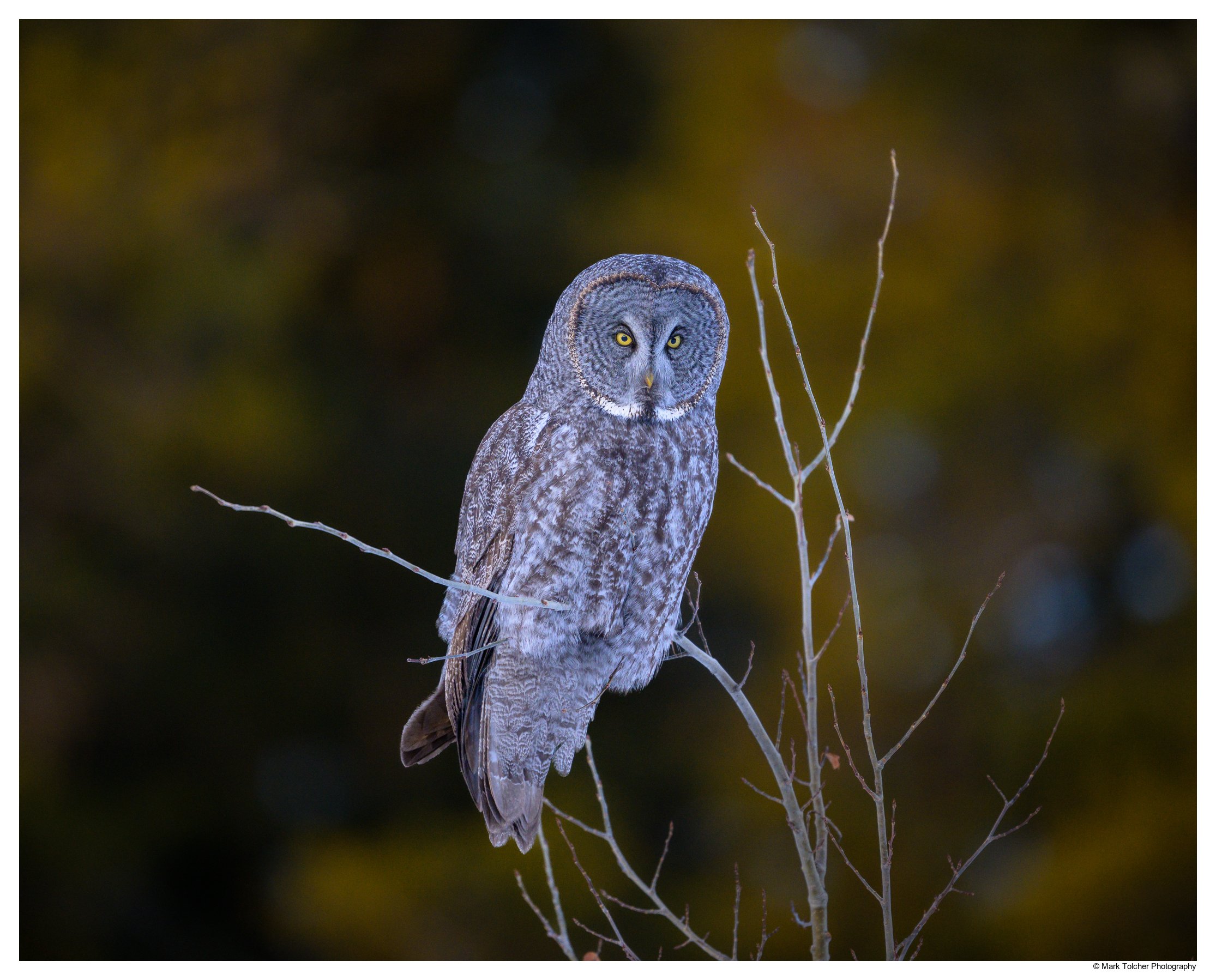Mark Tolcher Photography
great grey owl
The Great Grey Owl; ive had a fascination with wanting to see them for so many years and in February 2023 I finally had my first chance on a trip to Minnesota; Sax Zim Bog with the intention of spending the week photographing these magnificent owls – or at least that was the plan. Sadly unseasonably warm weather and a splash of poor luck meant for the whole week I got only the briefest of moments with one owl resulting in just 3 images the entire week.
The following year; I picked a better guide, a better location and had amazing luck. You can read my full trip report from my week spent in Calgary with Ken Anderson Photography Here and a second trip the following year here.
The great grey owl (iStrix nebulosa) is the world’s largest owl species by length. It is distributed across the Northern Hemisphere and is the only species in the genus Strix found in both Eastern and Western Hemispheres. These magnificent owls have large rounded heads with grey faces, yellow eyes surrounded by darker circles, and a distinctive white “bow-tie” collar just below the beak. Their underparts are light with dark streaks, while the upper parts are grey with pale bars. Interestingly, great grey owls lack ear tufts and possess the largest facial disc of any raptor. Their long tails taper to a rounded end, and their wingspan can exceed 152 cm (5 ft 0 in) while their average weight ranges from 580 to 1,900 g (1.28 to 4.19 lb)1. These silent hunters are sometimes called the “Phantom of the North,” “cinereous owl,” “spectral owl,” “Lapland owl,” “spruce owl,” and “sooty owl.”
Great Grey Owl with Prey











































